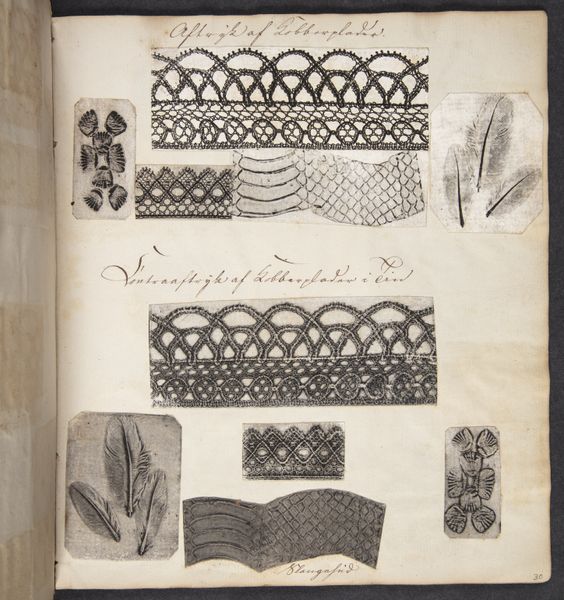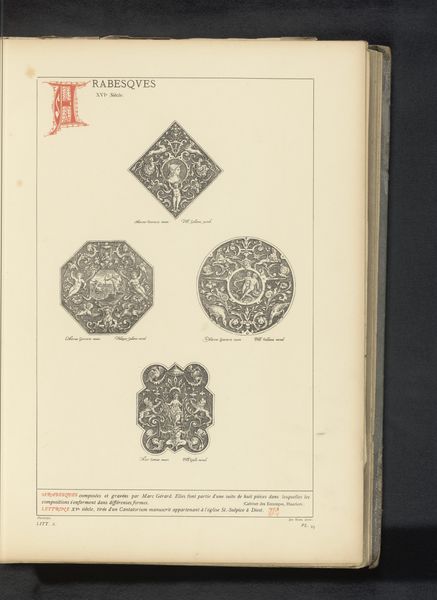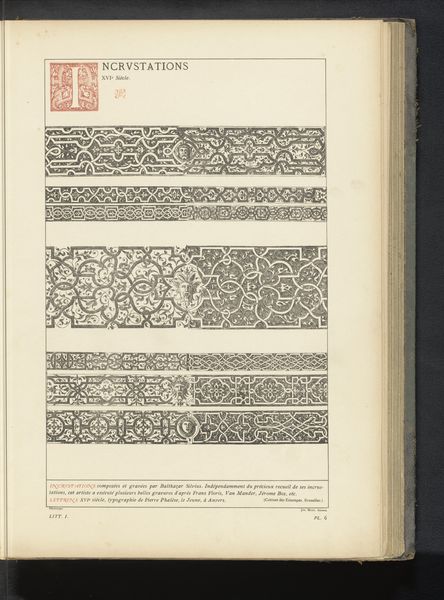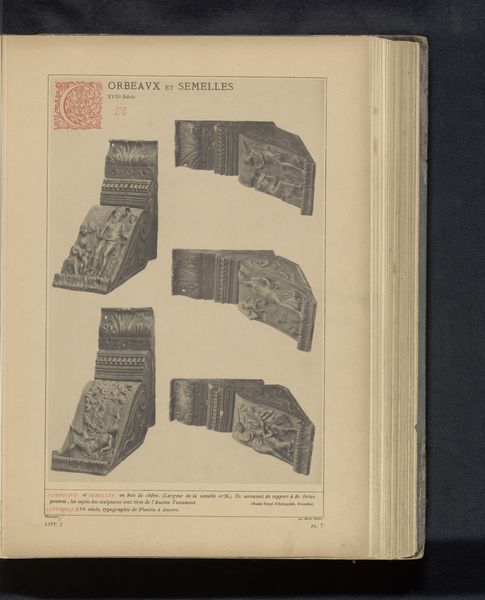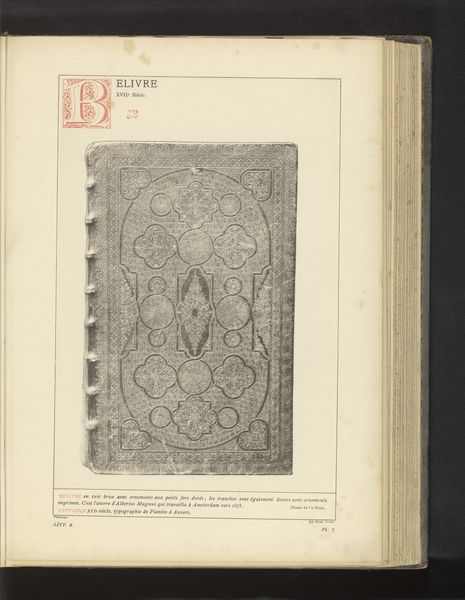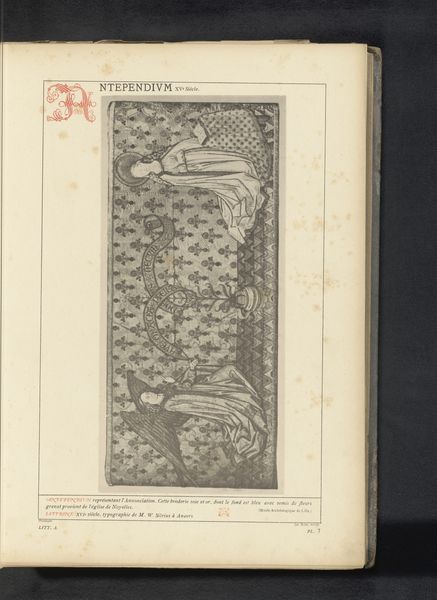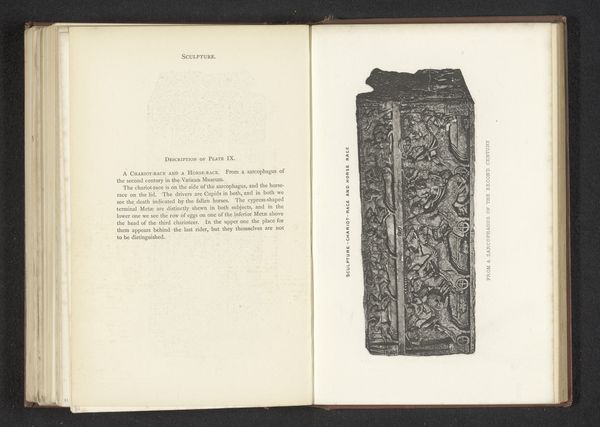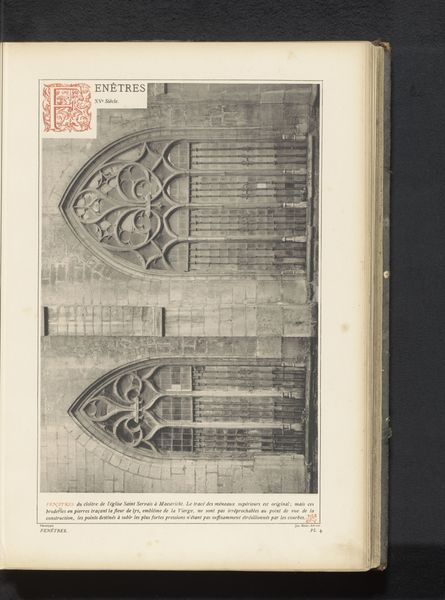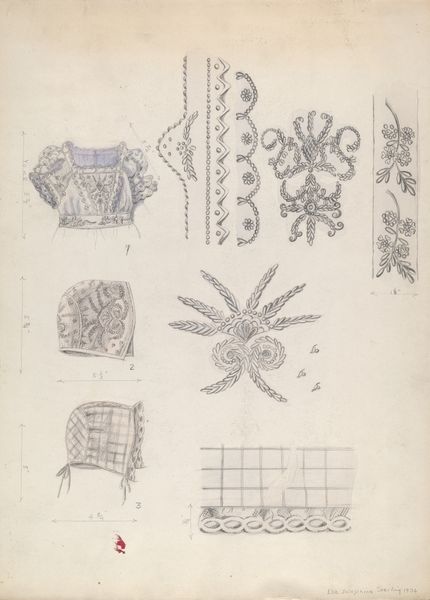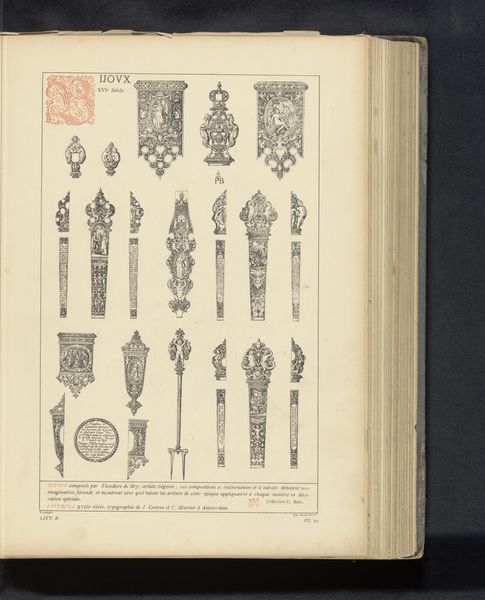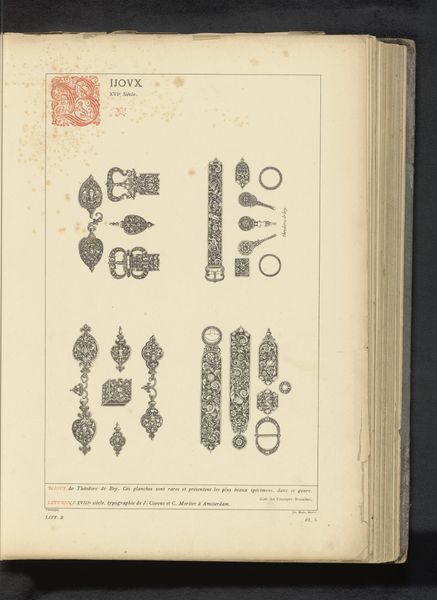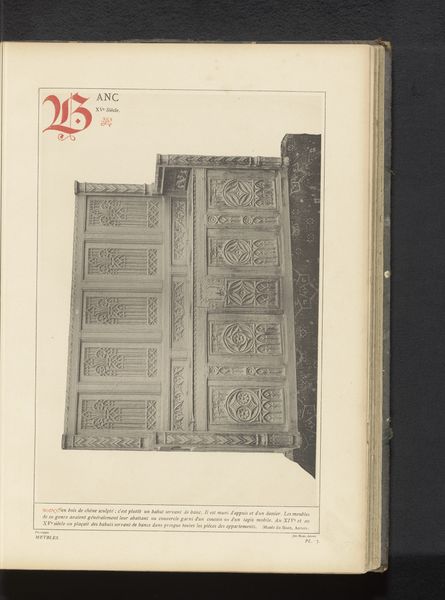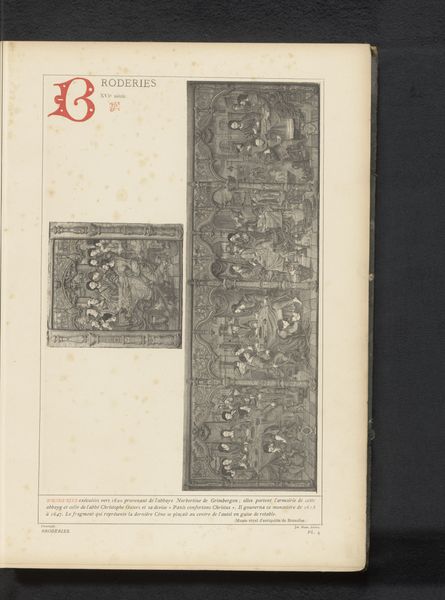
Vijf liturgische kledingstukken met borduursels, uit de collectie van de Soeurs de Notre-Dame de Namur before 1887
0:00
0:00
drawing, fibre-art, print, textile, engraving
#
drawing
#
fibre-art
#
medieval
# print
#
textile
#
engraving
Dimensions: height 340 mm, width 230 mm
Copyright: Rijks Museum: Open Domain
These five liturgical garments, embroidered as part of the Soeurs de Notre-Dame de Namur collection, invite us to consider the rich tradition of textile art in religious practice. The garments are meticulously crafted with embroidery, a labor-intensive process that involves stitching decorative patterns and imagery onto fabric. The embroiderers, whose names are lost to history, would have employed a range of techniques, from delicate needlework to more robust applications of thread, creating texture and depth, and likely working from established pattern books. Embroidery, though often associated with domestic craft, has historically been a highly skilled and valued form of artistic expression, demanding precision and patience. The creation of liturgical vestments speaks to a deep investment of time and resources, reflecting the importance of visual splendor in religious ritual. It also signifies how the labor of mostly anonymous makers can produce objects that carry profound cultural and spiritual meaning.
Comments
No comments
Be the first to comment and join the conversation on the ultimate creative platform.
